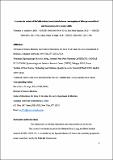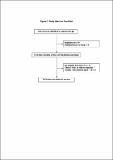Por favor, use este identificador para citar o enlazar a este item:
http://hdl.handle.net/10261/345103COMPARTIR / EXPORTAR:
 SHARE SHARE
 CORE
BASE CORE
BASE
|
|
| Visualizar otros formatos: MARC | Dublin Core | RDF | ORE | MODS | METS | DIDL | DATACITE | |

| Título: | A systematic review of the bidirectional association between consumption of ultra-processed food and sleep parameters among adults |
Autor: | Andreeva, Valentina A.; Pérez-Jiménez, Jara CSIC ORCID; St-Onge, Marie-Pierre | Fecha de publicación: | 2023 | Editor: | Springer Nature | Citación: | Current Obesity Reports 12(4): 439-452 (2023) | Resumen: | [Purpose of Review] We summarized research on the bidirectional association between intake of ultra-processed food (UPF) and sleep. [Recent findings] Sleep contributes to cardiometabolic health in part via food intake patterns. Restricting sleep increases intakes of high-carbohydrate/high-fat foods, a profile representative of UPF. This systematic review covers the association of UPF intake, as an exposure or an outcome, and sleep. UPF was defined as NOVA Group 4. MEDLINE and EMBASE were searched through April 2023 for epidemiological studies with general-population adult samples. Fifteen studies met the inclusion criteria; all were cross-sectional, published between 2016 and 2023, with samples from Brazil (n = 8), Spain (n = 2), Italy (n = 1), the UK (n = 1), Paraguay (n = 1), Iran (n = 1) and China (n = 1). Thirteen studies examined UPF intake as the exposure whereas two tested UPF intake as the outcome. UPF intakes were determined using food frequency questionnaires (73%) or 24-h recalls (27%). Two studies assessed sleep via accelerometry; the remaining studies relied on self-reports of sleep quality, duration, anxiety-induced insomnia, and napping, with 60% using a single question. The average methodological quality across the studies was deemed "fair". Six of the 13 studies that examined UPF consumption as the exposure revealed inverse associations with sleep outcomes in adjusted (n = 5) or bivariate (n = 1) analyses. Both studies addressing UPF consumption as the outcome and sleep as the exposure showed significant inverse associations. Evidence for UPF-sleep associations is accumulating, although sleep assessment limitations are apparent. This review can provide impetus for research using comprehensive and validated sleep measures and nudge policymakers towards refining dietary guidelines worldwide. [Summary] This systematic review covers the association of UPF intake, as an exposure or an outcome, and sleep. UPF was defined as NOVA Group 4. MEDLINE and EMBASE were searched through April 2023 for epidemiological studies with general-population adult samples. Fifteen studies met the inclusion criteria; all were cross-sectional, published between 2016 and 2023, with samples from Brazil (n = 8), Spain (n = 2), Italy (n = 1), the UK (n = 1), Paraguay (n = 1), Iran (n = 1) and China (n = 1). Thirteen studies examined UPF intake as the exposure whereas two tested UPF intake as the outcome. UPF intakes were determined using food frequency questionnaires (73%) or 24-h recalls (27%). Two studies assessed sleep via accelerometry; the remaining studies relied on self-reports of sleep quality, duration, anxiety-induced insomnia, and napping, with 60% using a single question. The average methodological quality across the studies was deemed “fair”. Six of the 13 studies that examined UPF consumption as the exposure revealed inverse associations with sleep outcomes in adjusted (n = 5) or bivariate (n = 1) analyses. Both studies addressing UPF consumption as the outcome and sleep as the exposure showed significant inverse associations. Evidence for UPF-sleep associations is accumulating, although sleep assessment limitations are apparent. This review can provide impetus for research using comprehensive and validated sleep measures and nudge policymakers towards refining dietary guidelines worldwide. |
Versión del editor: | https://doi.org/10.1007/s13679-023-00512-5 | URI: | http://hdl.handle.net/10261/345103 | DOI: | 10.1007/s13679-023-00512-5 | E-ISSN: | 2162-4968 |
| Aparece en las colecciones: | (ICTAN) Artículos |
Ficheros en este ítem:
| Fichero | Descripción | Tamaño | Formato | |
|---|---|---|---|---|
| Current Obesity Reports_UPF_Sleep_Text_Table_pre-print.pdf | 249,96 kB | Adobe PDF |  Visualizar/Abrir | |
| Current Obesity Reports_UPF_Sleep_Figure1_pre-print.pdf | 66,62 kB | Adobe PDF |  Visualizar/Abrir |
CORE Recommender
SCOPUSTM
Citations
1
checked on 22-abr-2024
Page view(s)
14
checked on 28-abr-2024
Google ScholarTM
Check
Altmetric
Altmetric
NOTA: Los ítems de Digital.CSIC están protegidos por copyright, con todos los derechos reservados, a menos que se indique lo contrario.
